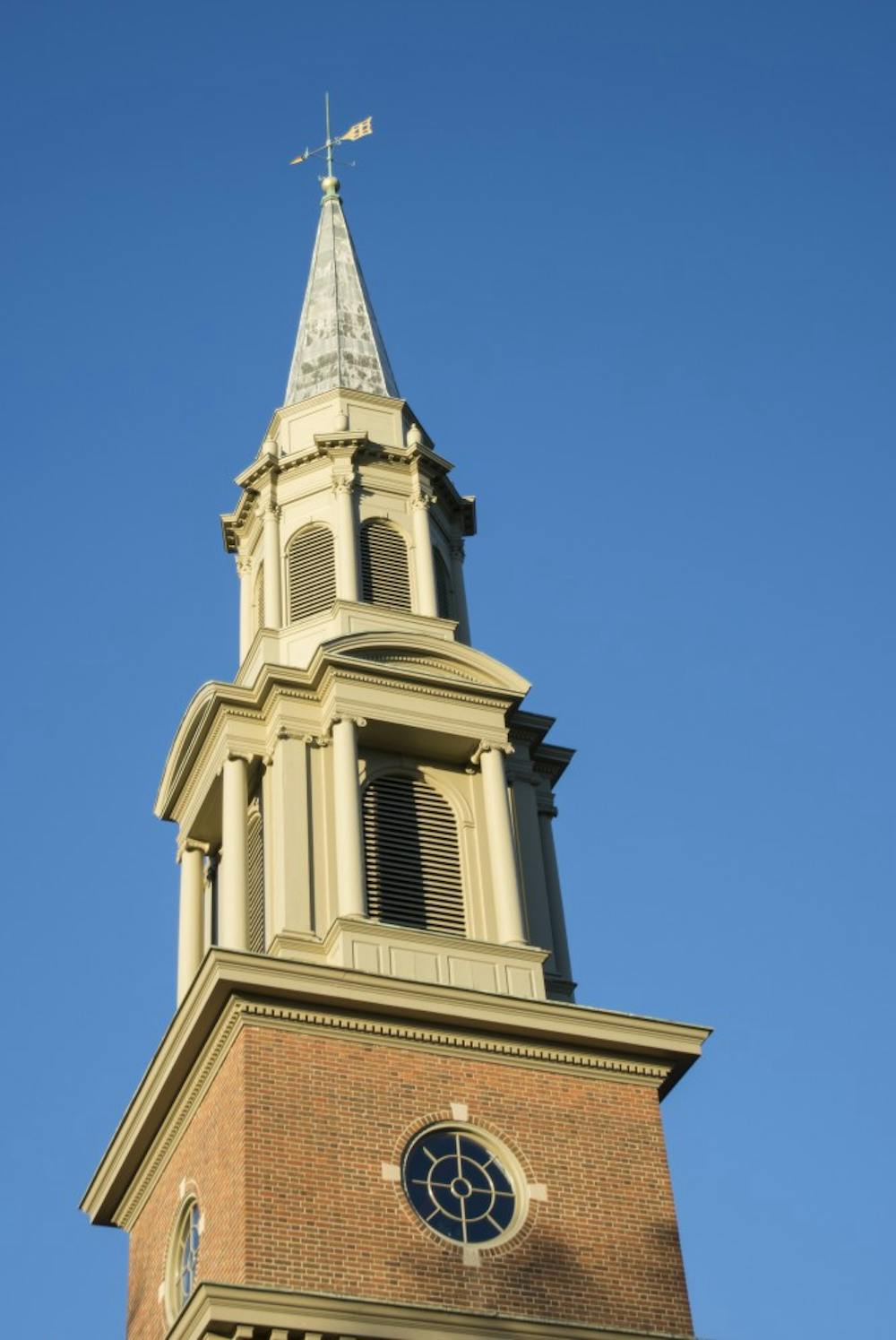An annual survey on college freshmen found nearly 30 percent of respondents did not identify with a specific religion, but this does not show all students’ faith is declining, an Indiana University professor said.
The study is conducted by the Cooperative Institutional Research Program at the University of California, Los Angeles, and is in its 50th year.
The 2015 CIRP Freshman Survey studied 141,189 first-time, full-time students who entered 199 various four-year colleges and universities in the country. The 2014 survey found 27.5 percent of students select “none” as their religious preference, a 2.9 percentage increase from 2013.
Mathew Harriss, an assistant professor of religious studies at Indiana University, said the increase in students selecting “none,” “agnostic” or “atheist” shows how students change when they come to school.
“Young people moving away from home and into new communities almost always change habits, challenge old commitments and find new ways of expressing and understanding them,” Harriss said.
According to data gathered from Collegiate Link, a website with a list of university organizations, 6 percent or less of the undergraduate populations at Ball State University, Indiana University and Purdue University are involved in religious organizations.
Ball State has 1,101 students involved, which is 6.1 percent of the undergraduate population. IU has 648 students, which is 1.6 percent, and Purdue 1,538, which is 5.2 percent. This is based on rosters available on each of the university’s Collegiate Link sites.
Harriss said there are nontraditional ways students can show their faith that could not be accounted for in those numbers.
“Activism and political organizing, community service, new kinds of reading and discussion groups, independent devotions, yoga — all of these can express faith without falling under the label of ‘campus ministry,’” Harriss said.
Alex Romoser, a senior at Ball State, is a leader at Revolution, a faith community where people attend worship services and Bible study sessions. He said even though students may not be involved in campus ministry or other religious organizations, it doesn’t mean they aren’t active.
“College is a time where people are trying to figure out who they are and what they stand for,” Romoser said.
Across Muncie and within Ball State, Romoser said there are many churches and organizations working together to keep Christianity active.
“I would say BSU has strong pockets of Christianity, but there are a lot of world views and perspectives that the BSU student body as a whole has,” Romoser said.
Since the 19th century, college students have had crises of faith, said Susan Curtis, a religious studies professor at Purdue who specializes in the history of religion in America.
“As students mature, they often are able to incorporate the traditions, beliefs and values of religion into a worldview that has been complicated by science, the humanities, social science and the arts,” Curtis said.
This is why students may fall away from a formal religion, Curtis said.
Harriss believes young people today are more comfortable saying they have doubts or non-beliefs, which could explain the increase in the CIRP Freshman Survey.
“Any bump in numbers doesn’t necessarily mean that there are more ‘atheists’ or ‘agnostics’ than in the 1950s,” Harriss said. “It more likely means that more people feel comfortable characterizing themselves that way.”
David Phillips is a senior at IU and target movement leader for Cru, a worldwide interdenominational Christian ministry with chapters at various universities.
In his four years at IU, Phillips said he has seen a lot of students who are agnostic or atheist, which aligns with the findings in the survey.
“I’ve had a couple students tell me before that [religion] is something that they’ll think about ... more when they are older and have a family,” Phillips said. “I kind of get this sense that people think this is a break period, like this is their time to have fun and do whatever.”
Phillips said society should be concerned because religion is a part of diversity.
“Losing religion is losing a large piece of diversity. You’re losing a ton of the world’s stories and kind of moving to a more single narrative,” Phillips said.
Curtis said part of growing up means young people will make their own decisions — including on matters of faith. She said that could be a concern if it meant students were somehow losing their moral compass.
“Without a sense of right and wrong, empathy for others and a desire to think of a community before our own selfish interests, society can become shattered and guided by the principle of ‘every man for himself, and the devil take the hindmost,'” Curtis said.
Curtis said she does not think there is a permanent loss of religion during college. Instead, it can lead to a mature attitude toward religion.
“A college education can give a student conceptual tools for understanding the world apart from religion, but it also can give us conceptual tools for appreciating why faith communities have endured for thousands of years,” Curtis said.
Religion provides literature, music, art and an opportunity for people to act collectively, she said.
“Some students may find other forms of sociality, but those who choose religion do so as a choice,” Curtis said.





